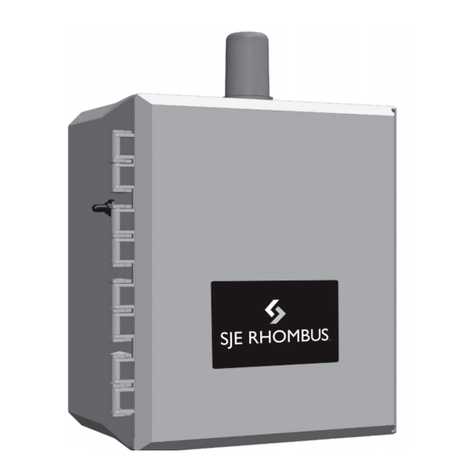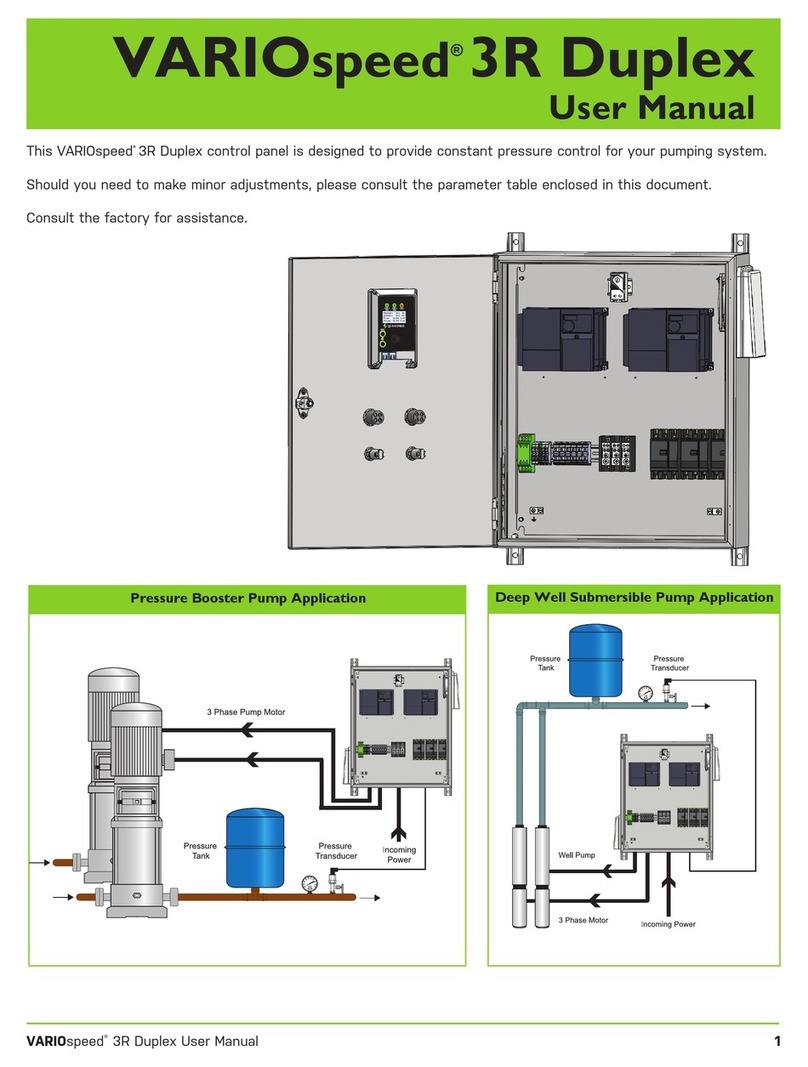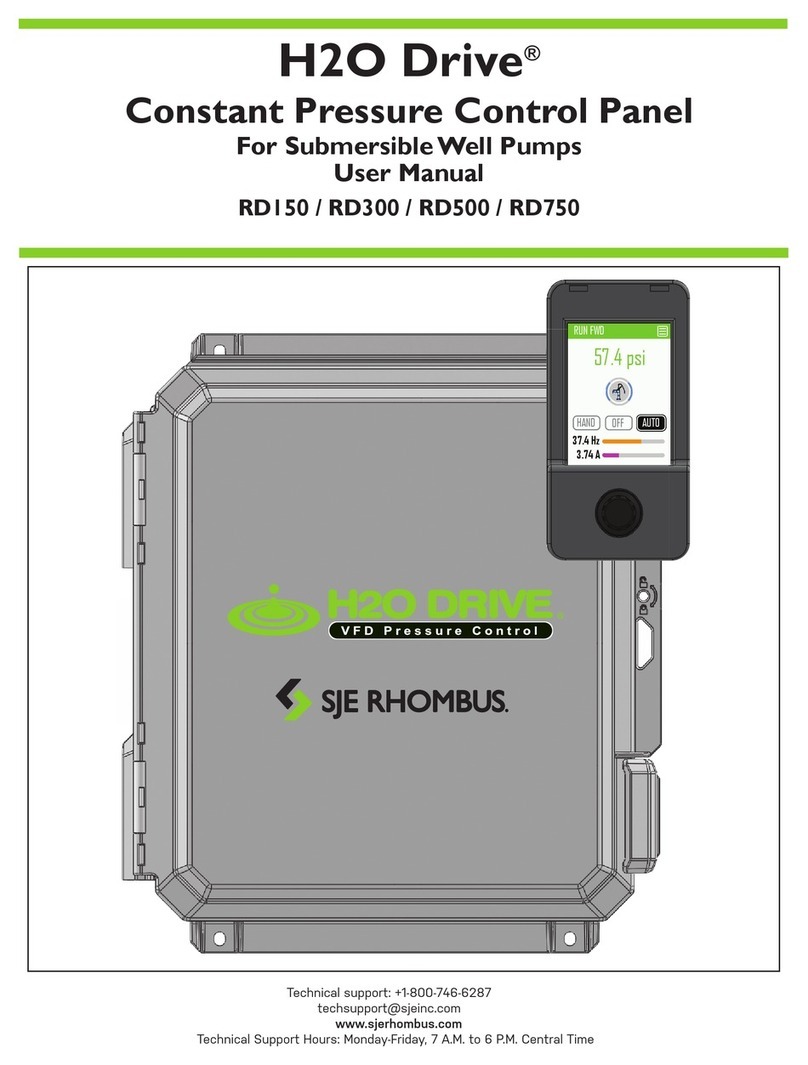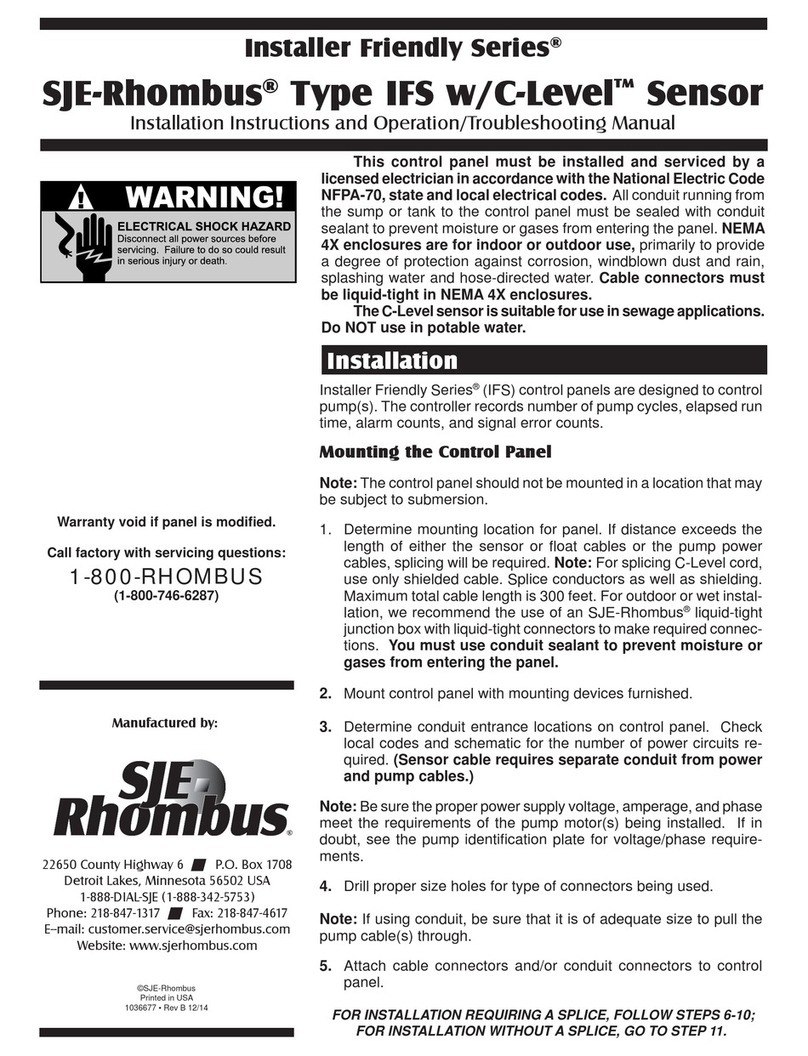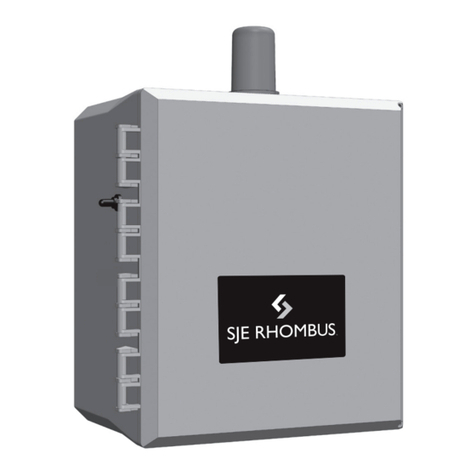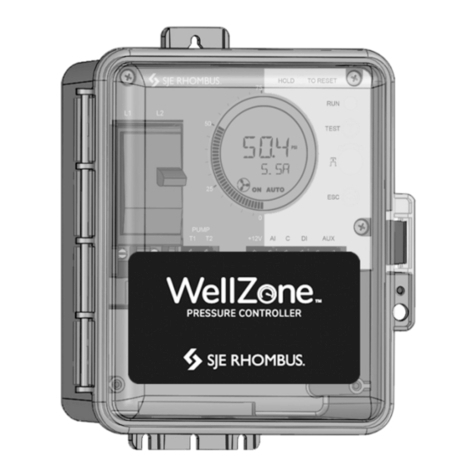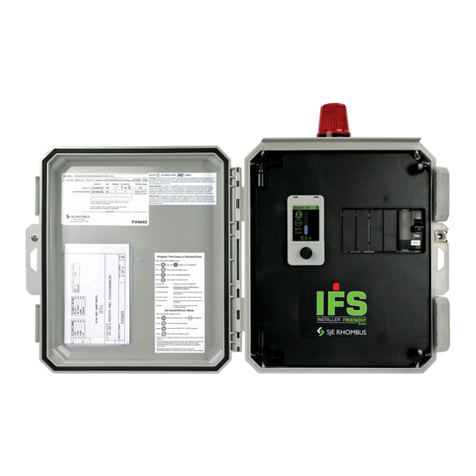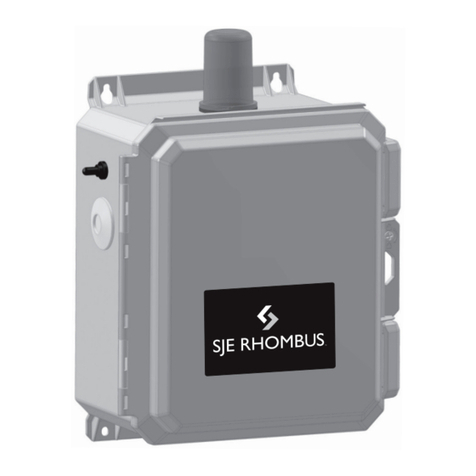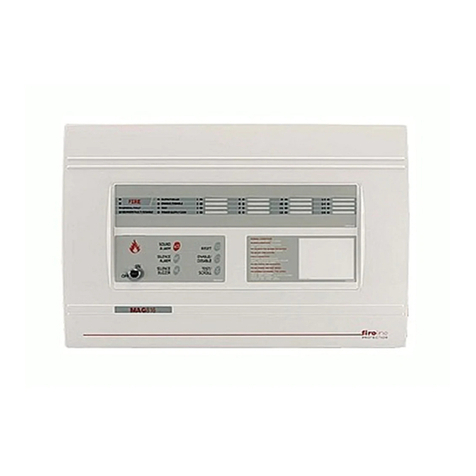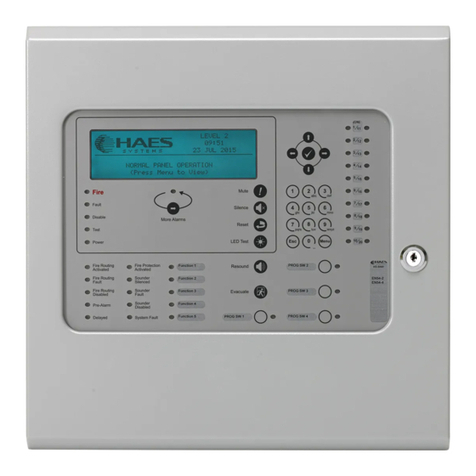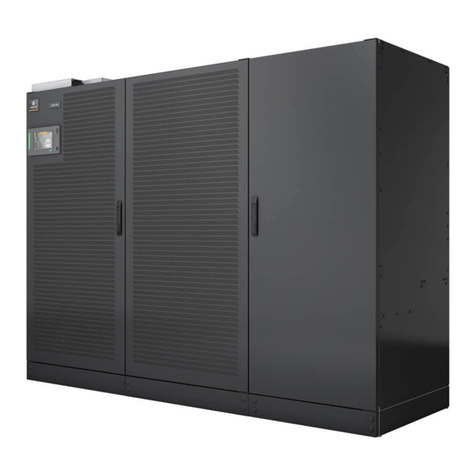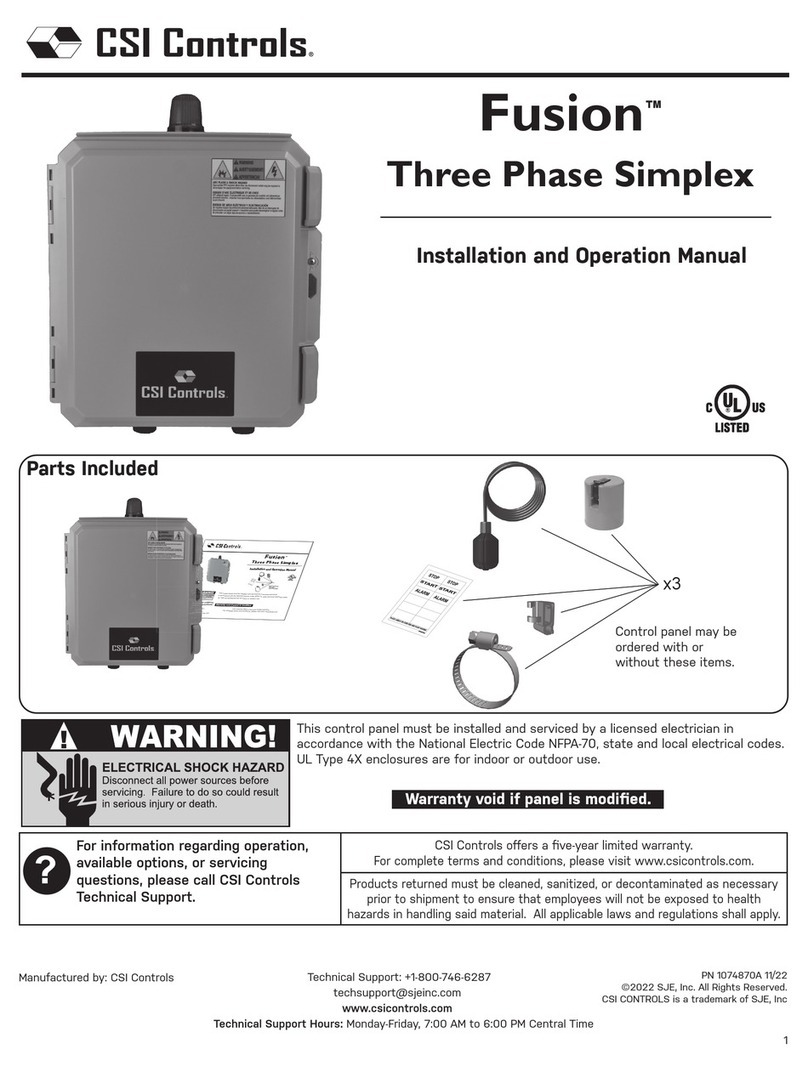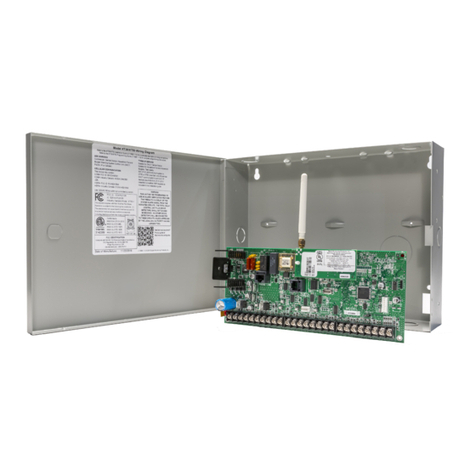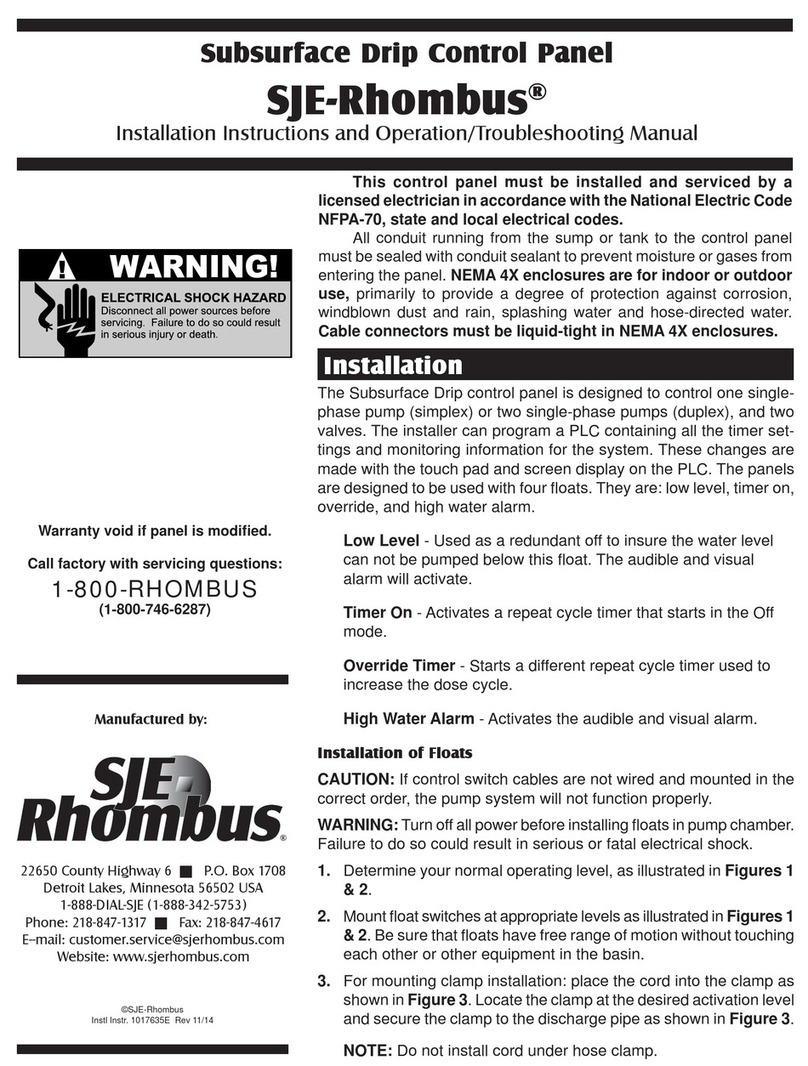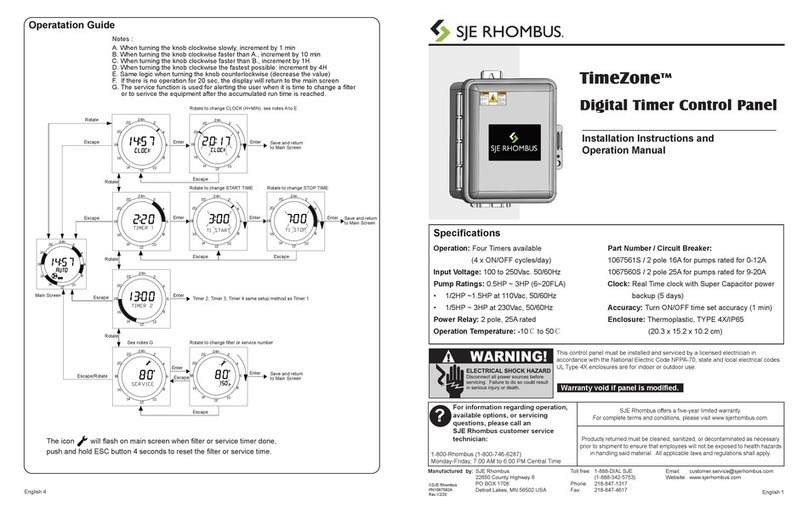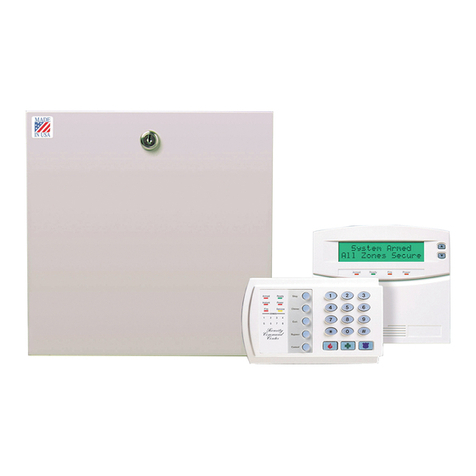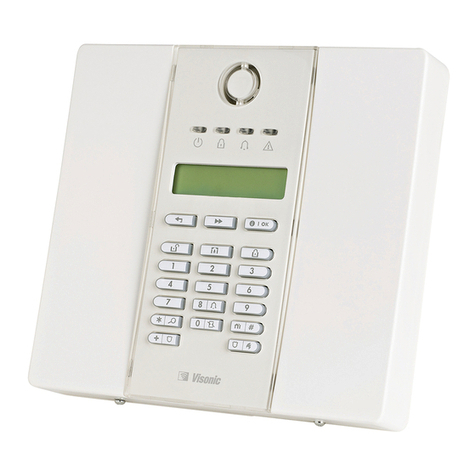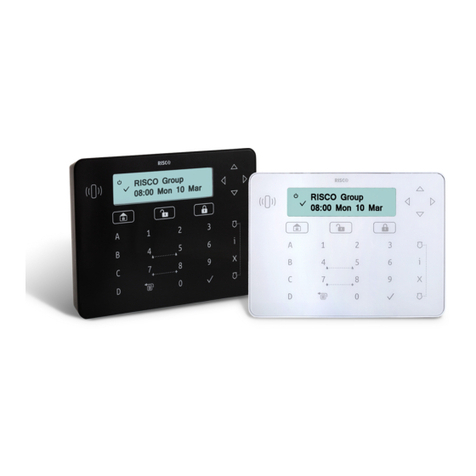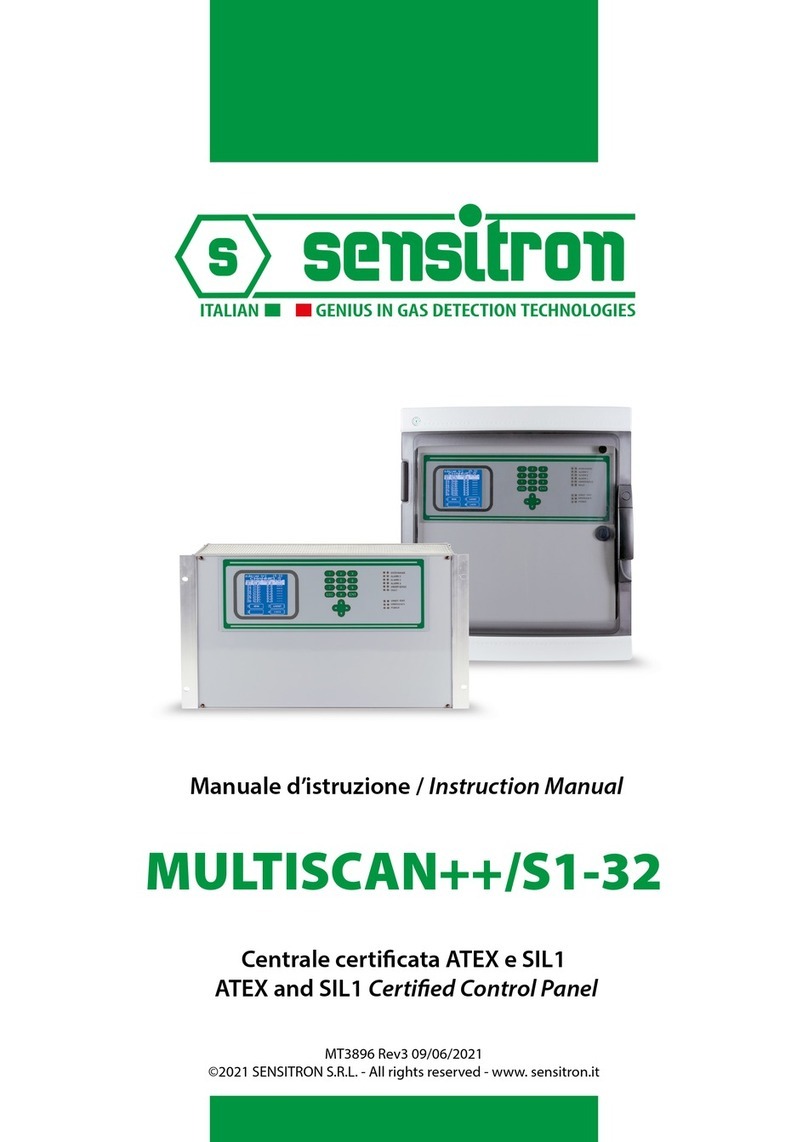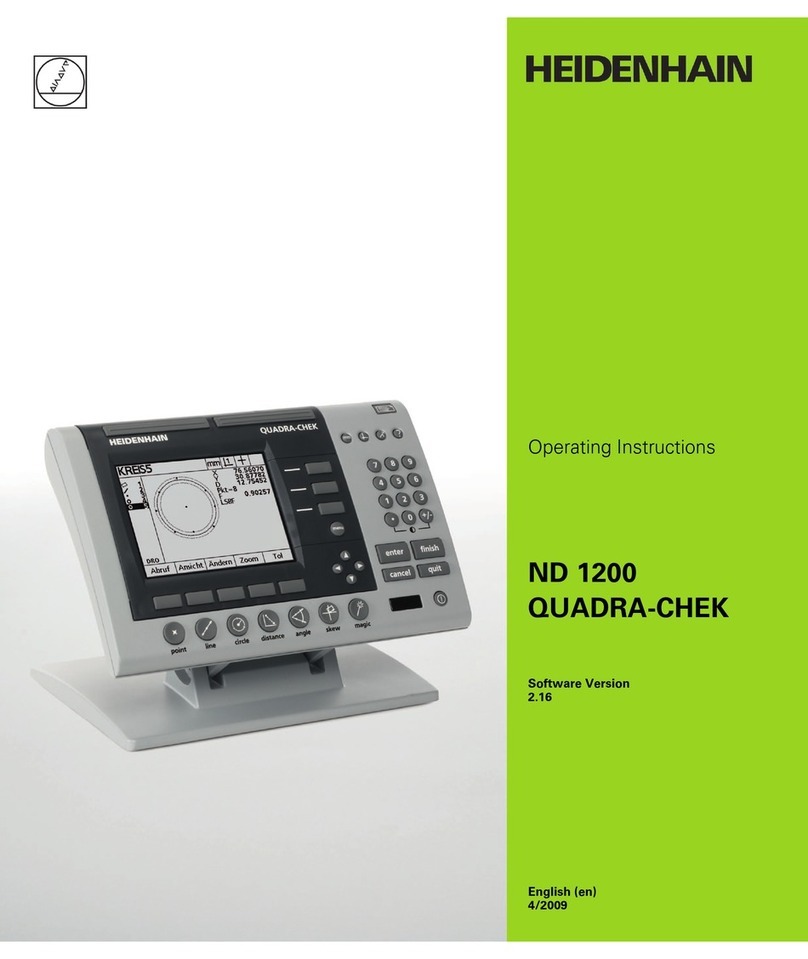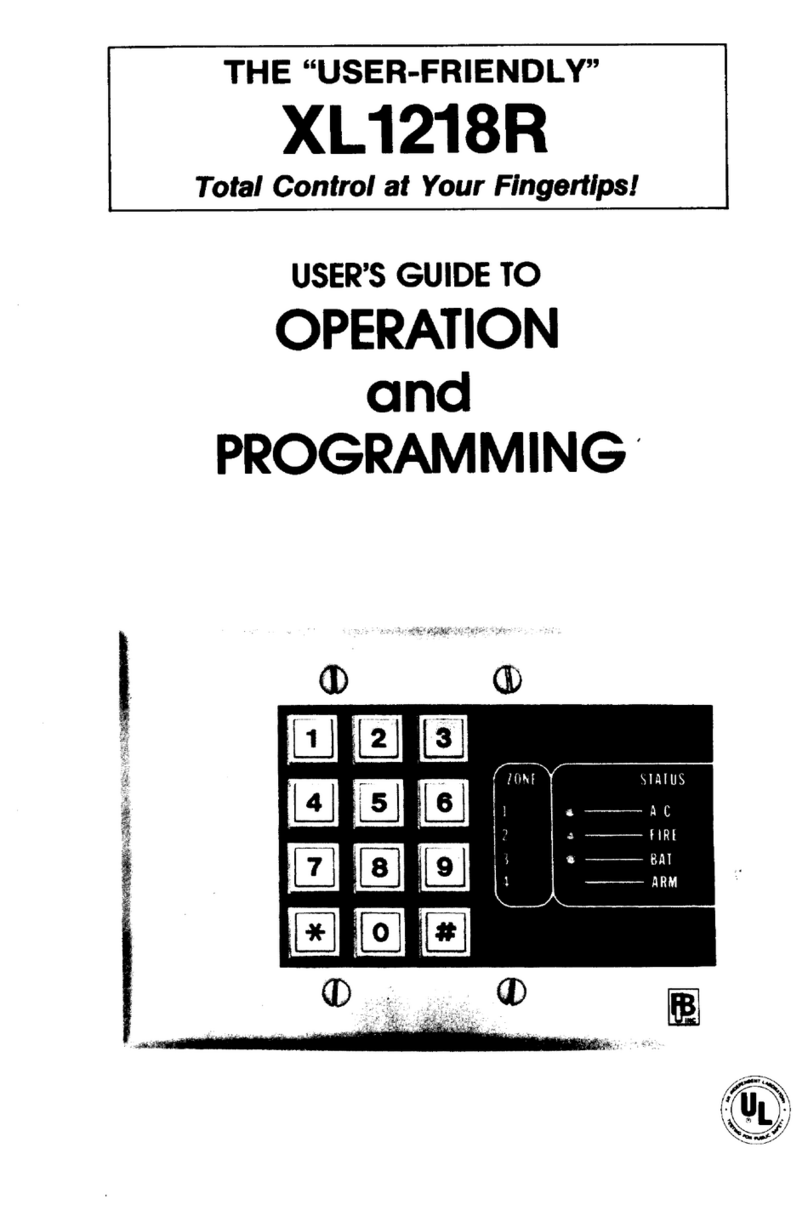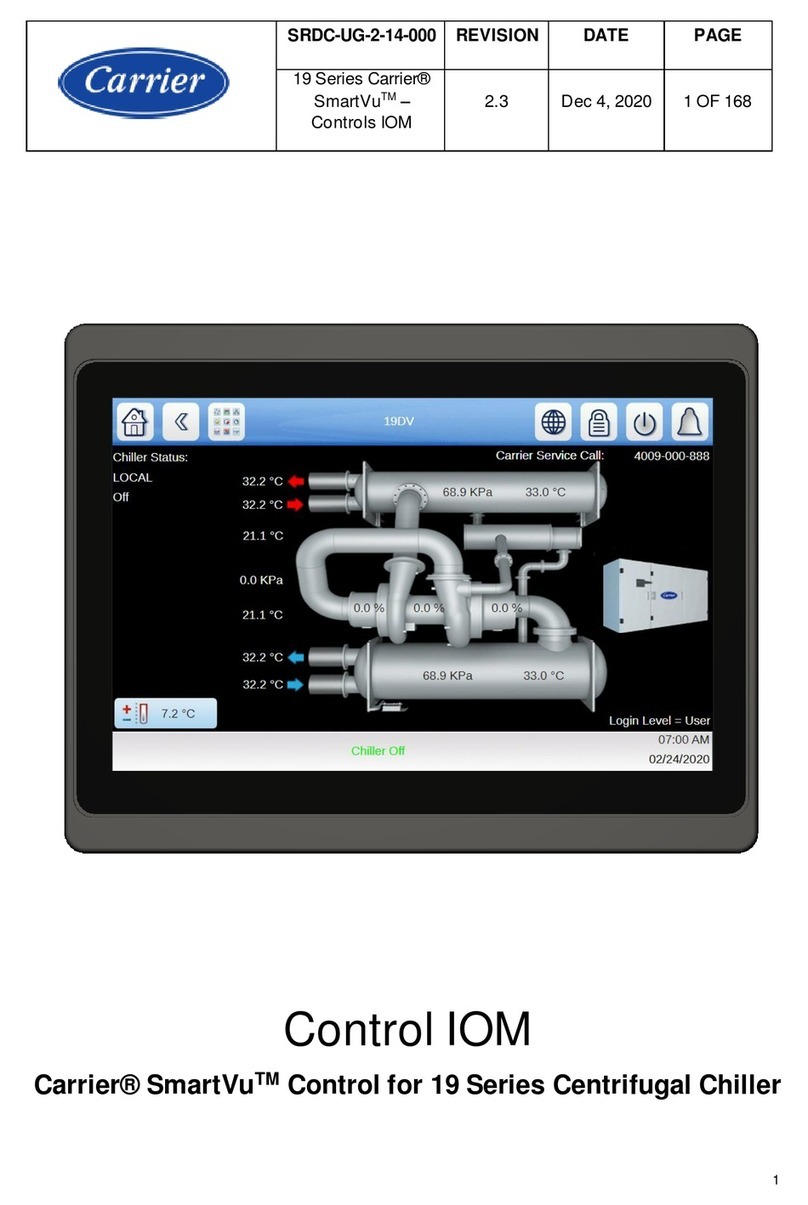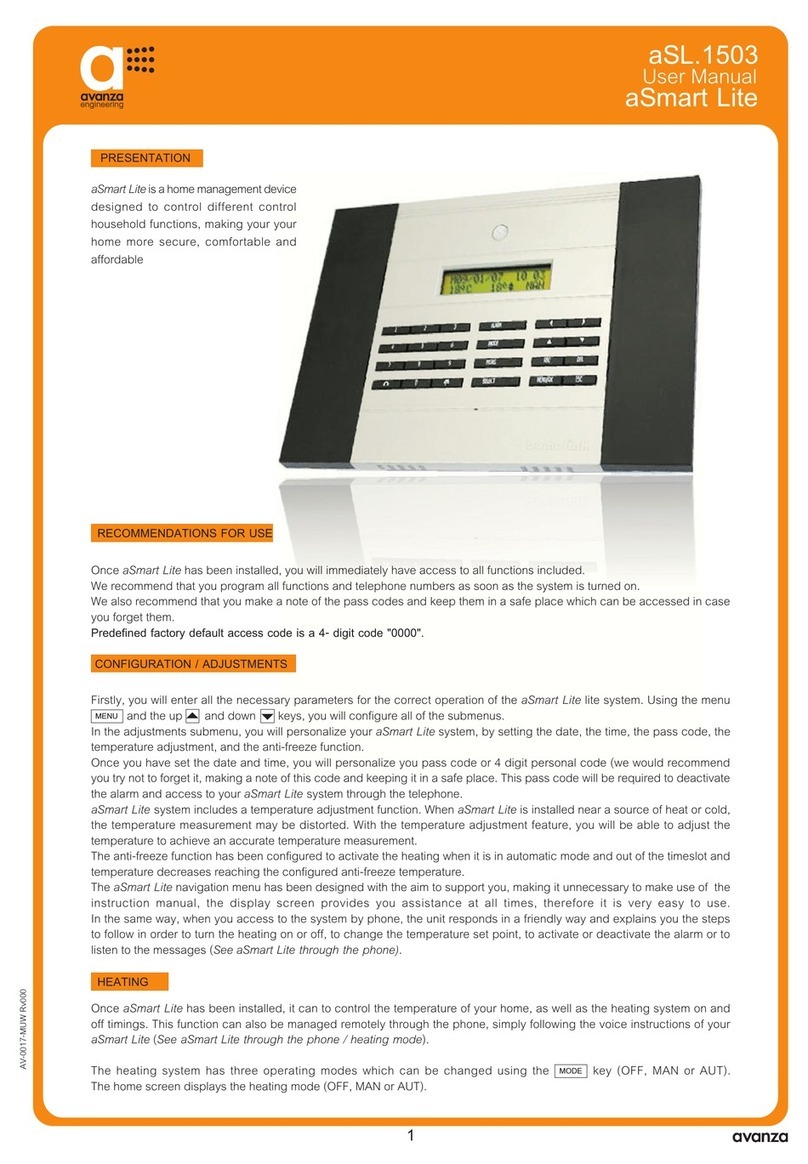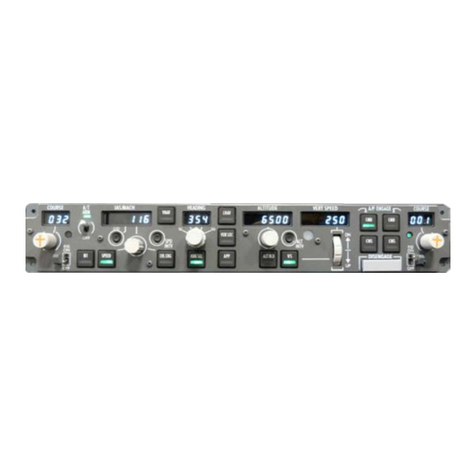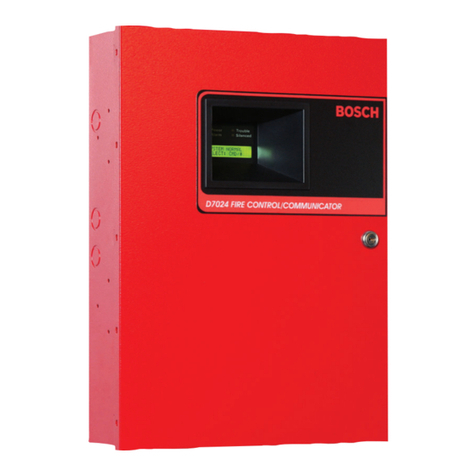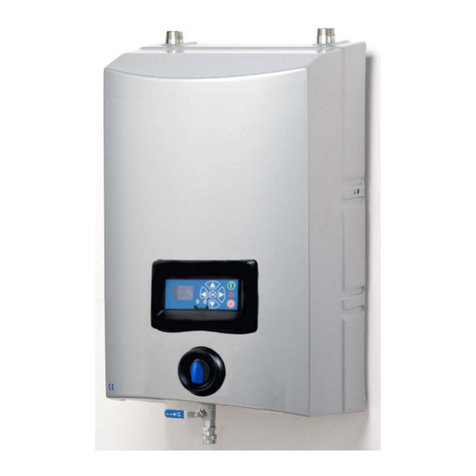
1. Isolate the oat by disconnecting one or both of the
oat leads from the oat terminals.
2. Place one ohmmeter lead on one of the oat wires, and
the other ohmmeter lead on the other oat wire.
3. Place the ohmmeter dial to read ohms and place on
the R X 1 scale. With the oat in the “o” position, the
scale should read innity (high resistance). Replace
the oat if you do not get this reading. With the oat
in the ON position, the scale should read nearly zero
(very low resistance). Replace the oat if you do not
get this reading.
NOTE: Readings may vary depending on the length of wire
and accuracy of the measuring device.
Fuses
Check the continuity of the fuse. With power OFF, pull the
fuse out of the fuse block. With the ohmmeter on the R X 1
scale, measure resistance. A reading of innity indicates a
blown fuse and must be replaced. Replace fuse with same
type, voltage and amp rating.
Magnetic Contactor Coil
WARNING: Disconnect incoming power to panel.
Check the coil by disconnecting one of the coil leads. Mea-
sure the coil resistance by setting the ohmmeter on the
R X 1 scale. A defective coil will read zero or innity, indicat-
ing a short or opened coil respectively. Replace defective
contactor with same type.
NOTE: Readings may vary depending on the accuracy of
the measuring device.
Alarm Horn
Moving the test/nor-
mal/silence switch to
the test position or
activating the alarm
float should turn on
the alarm horn. If the
horn does not sound, replace horn with same type.
Alarm Light
Moving the test/normal/silence switch to the test position
or activating the alarm oat should turn on the alarm light.
If the light does not activate, replace with same type.
Circuit Breaker (optional)
Check each pole of the circuit breaker for proper resistance
reading using the following procedure.
WARNING: Disconnect incoming power to panel.
1. Isolate the circuit breaker by disconnecting either line
side or load side wires.
2. Place the ohmmeter leads across the corresponding
line and load terminals of each pole.
3. With the ohmmeter on the R X 1 scale and the breaker
in the OFF position, the reading should be innity (very
high resistance). With the breaker in the ON position,
the reading should be nearly zero ohms (very low re-
sistance). If the readings are not as stated, replace
the circuit breaker with one of the same ratings.
NOTE: Readings may vary slightly depending on the
accuracy of the measuring device.
Float Controls
Check the oats during their entire range of operation.
Clean, adjust, or replace damaged oats.
Checking the oat resistance - The oat resistance can
be measured to determine if the oat is operating correctly
or is defective. Use the following procedure to measure
the oat resistance.
WARNING: Disconnect incoming power to panel.
Troubleshooting
NOTICE!
Products returned must be cleaned, sanitized, or decontaminated as necessary prior to shipment to ensure that employees
will not be exposed to health hazards in handling said material. All applicable laws and regulations shall apply.
For complete terms and conditions, please visit www.sjerhombus.com.
SJE Rhombus®Five-Year Limited Warranty




